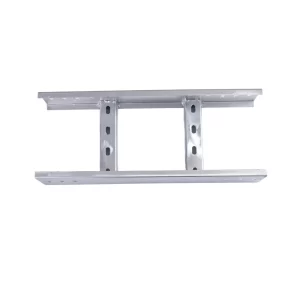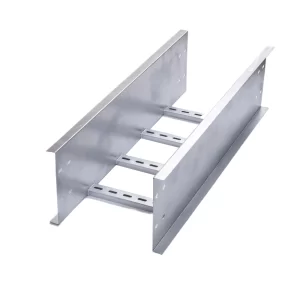There are three primary types of cable trays commonly used in various industries: ladder cable trays, trough cable trays, and solid-bottom cable trays. Each type has its unique features and applications.

1. Ladder Cable Trays
Ladder cable trays consist of two side rails connected by rungs or cross-members. This open design offers several advantages.
One of the key benefits is excellent ventilation. It allows for efficient heat dissipation, making it ideal for installations where cables generate a significant amount of heat, such as in server rooms or industrial facilities with heavy power usage. For instance, in a data center with a dense array of cables, the open structure of the ladder tray helps prevent overheating and potential equipment failures.
Another advantage is ease of access for inspection and maintenance. The open design enables technicians to quickly identify and address any issues with the cables. They can easily add, remove, or replace cables without much hassle.
However, the open nature of ladder trays means they may not provide as much protection against dust, debris, or physical damage compared to other types. Cables within ladder trays may be more exposed to the environment.
2. Trough Cable Trays
Trough cable trays have a U-shaped or trough-like design with a bottom and two raised sides.
They offer good containment and protection for the cables. The sides prevent the cables from falling out and provide some level of shielding from external elements. This makes them suitable for environments where there is a risk of mechanical damage or where cleanliness is crucial.
Trough cable trays also have a relatively large capacity and can accommodate a significant number of cables. They are often used in commercial buildings, hospitals, and other settings where a large number of cables need to be routed neatly.
One potential drawback is that they may not provide as good ventilation as ladder trays, which could be a consideration in applications where heat dissipation is a concern.


3. Solid-Bottom Cable Trays
Solid-bottom cable trays have a complete bottom along with the sides.
This design offers maximum protection for the cables. It keeps out dust, moisture, and other contaminants, making it suitable for harsh or demanding environments. For example, in outdoor installations or in areas with high levels of moisture or dirt, a solid-bottom tray provides superior protection.
They also offer excellent support and stability for the cables, reducing the risk of sagging or damage over time.
However, the solid bottom can limit ventilation, and they may be heavier and more expensive than other types.
In conclusion, the choice among the three main types of cable trays – ladder, trough, and solid-bottom – depends on factors such as the specific application, the environment in which they will be installed, the number and type of cables to be routed, ventilation requirements, and the level of protection needed. Understanding these characteristics helps in making the most appropriate selection for a safe and efficient cable management system.

